Site Analysis
The project is targeted to enable the city to function and serve as a food source and rethink the urban surface and its relationship to the future food-providing infrastructure.
Working Processing
5 Urban Agriculture Typologies
Roof Top
Floating Farm
Community Garden
Urban Farm
Edible Park
Reduce the food cost and increase accessibility. Provide Long-term Sustainable development, ecological and economic. Make a healthier environment for both humans and wildlife. Reduce the food cost and increase accessibility. Provide Long-term Sustainable development, ecological and economic. Make a healthier environment for both humans and wildlife.
Case Study
Fayetteville 2030 Food City Scenario Plan
Chicago City Hall Roof Top
Dane County (Madison, Wisconsin) Farmers' Market on the Square
Mayor Gavin Newsom's Executive Directive regarding Healthy and Sustainable Food for San Francisco
Pasona O2: Farm inside the building, Japan
Chinampas Mexico City: Floating farm
Scenario 1 Development
Population Decrease 25%
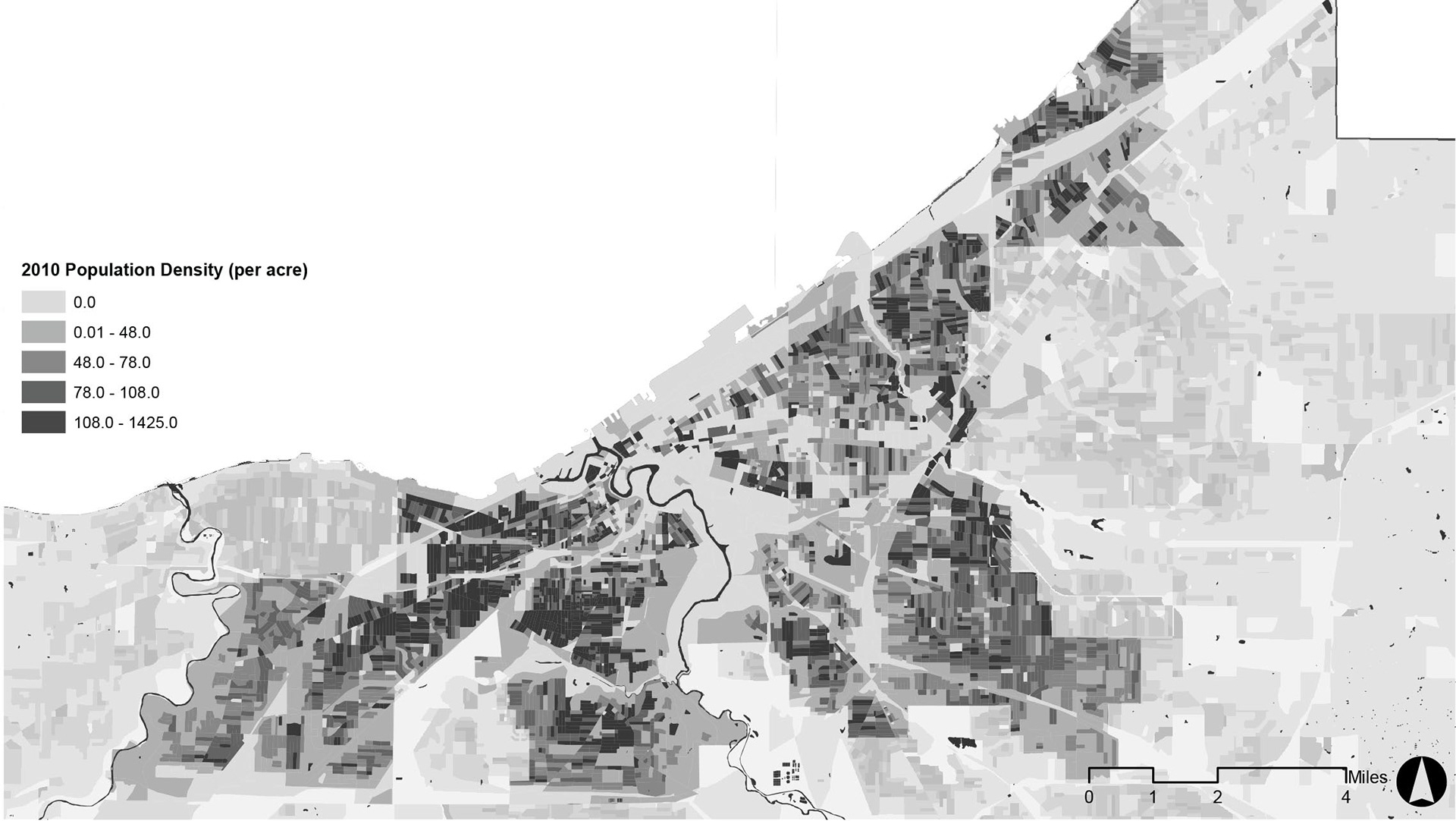
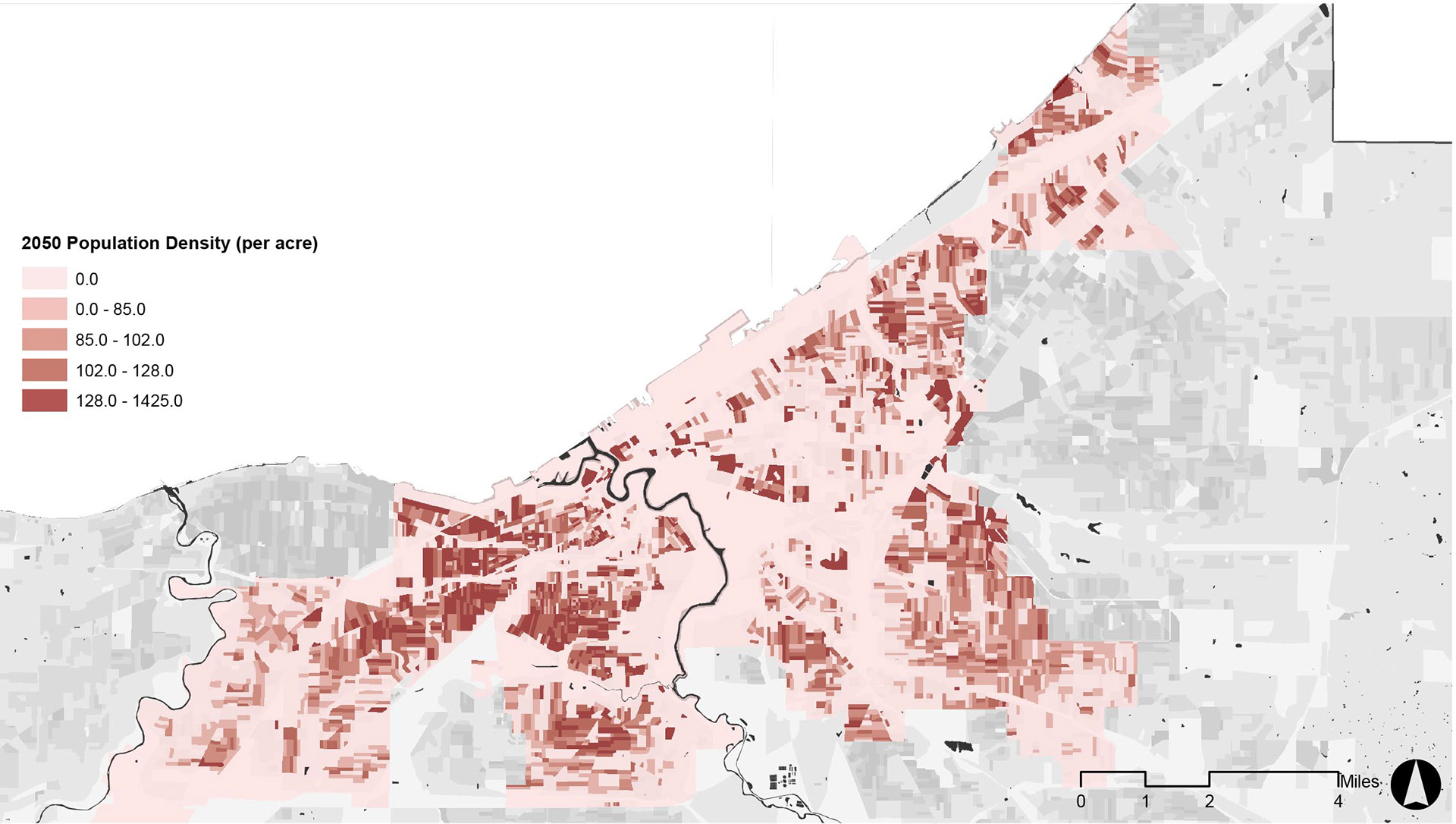
Scenario 2 Development
Population Increase 25%
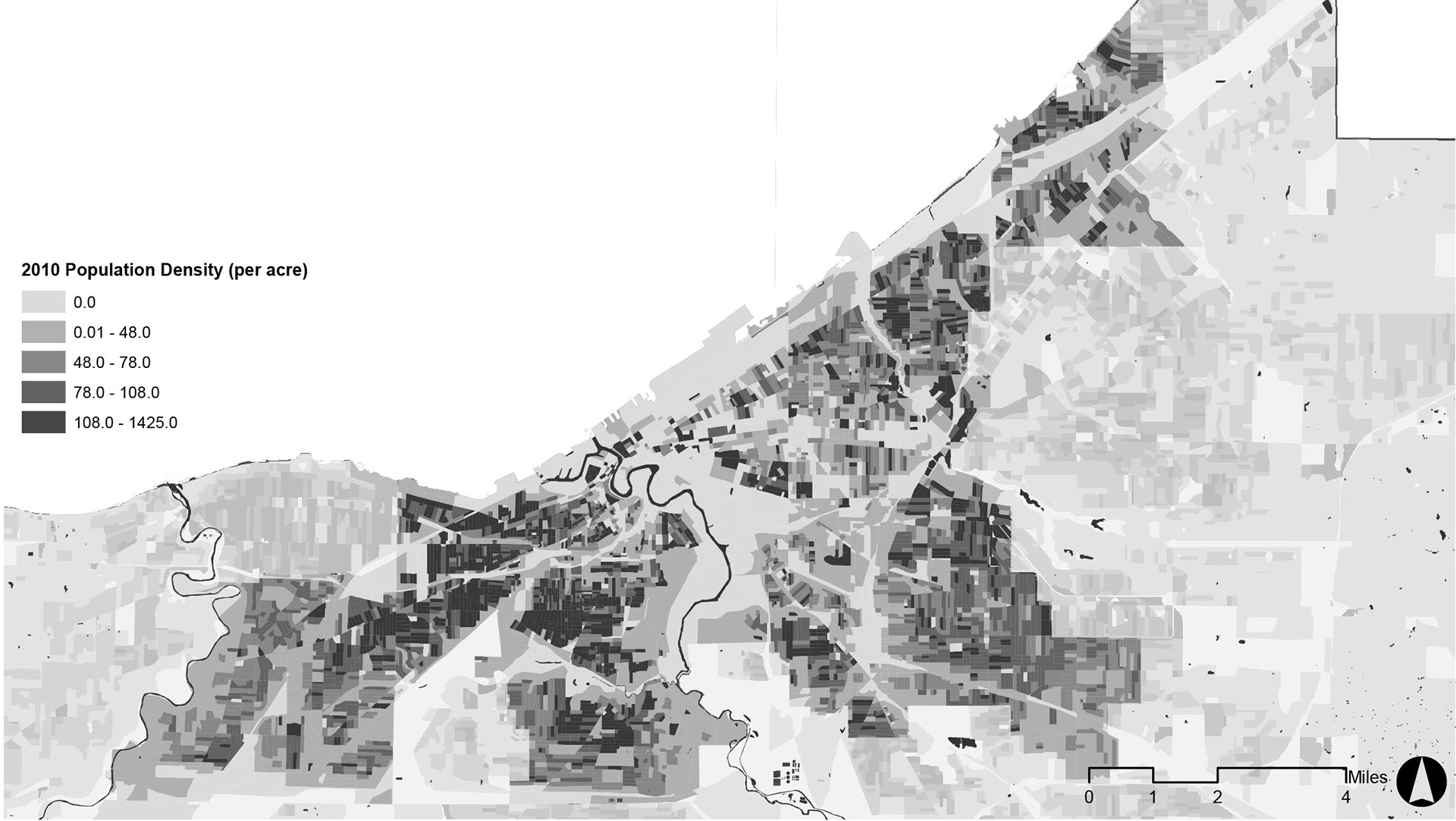

Scenario 3 Development
Population Stabilize
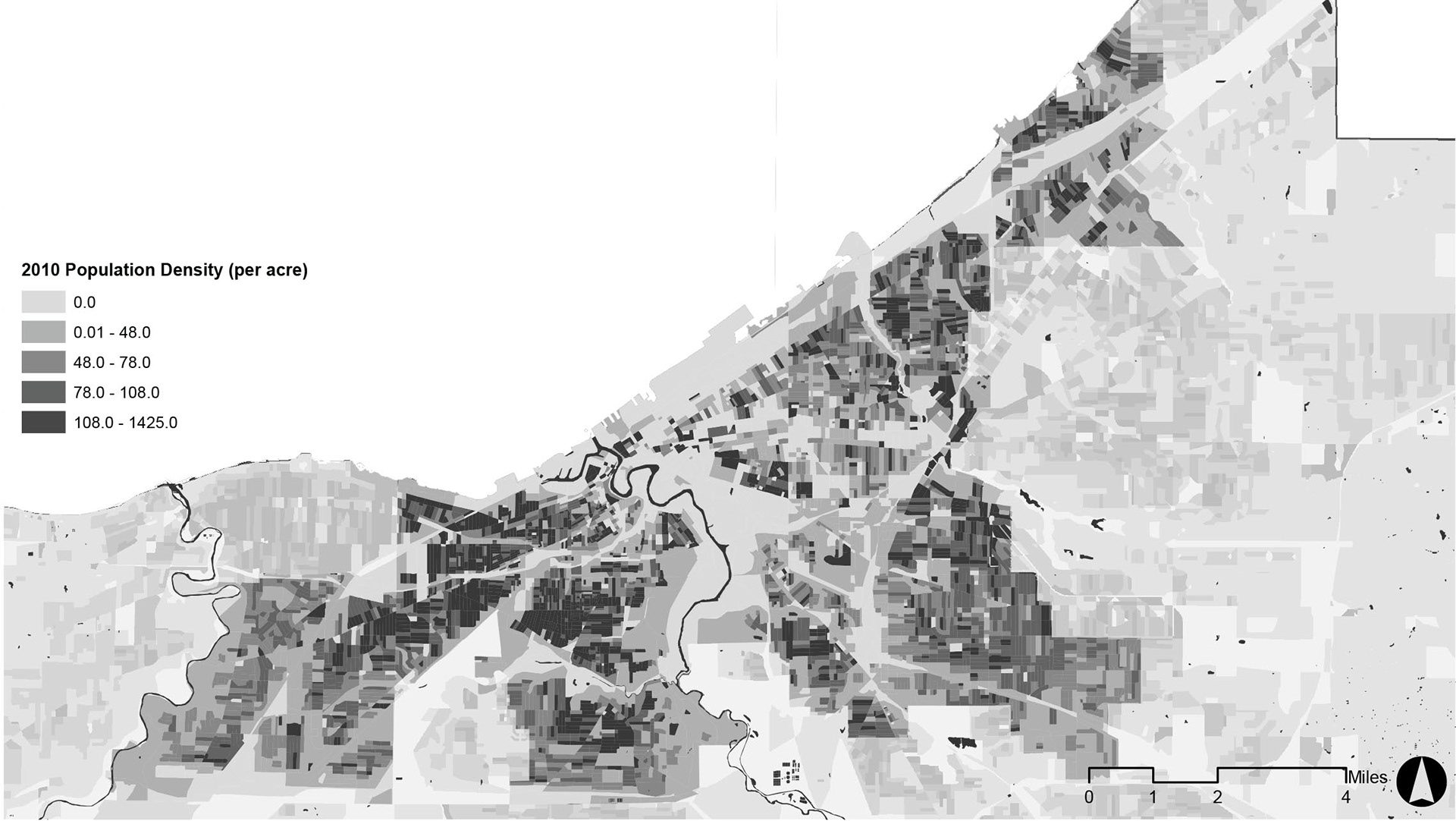
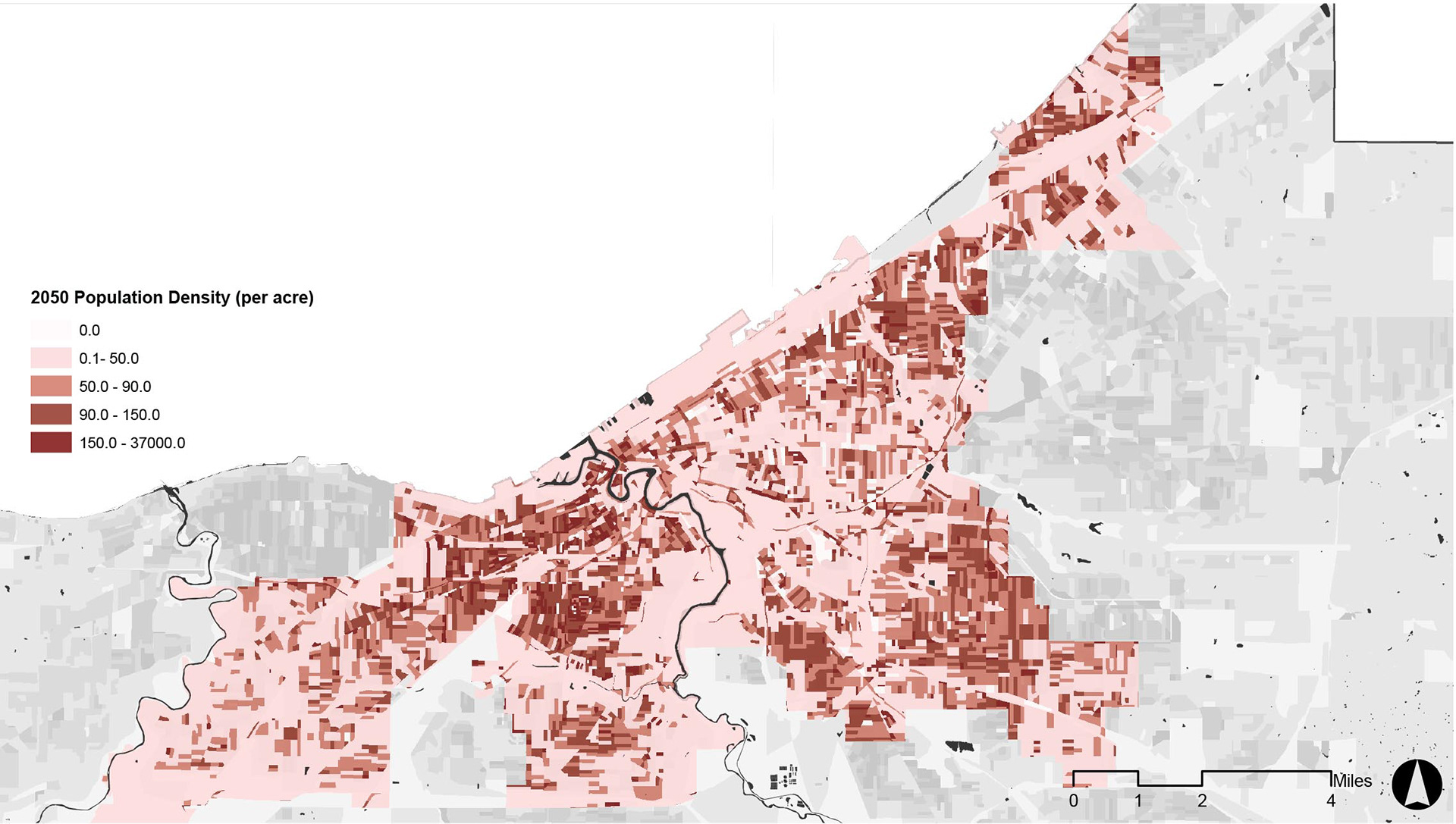
3 Scenarios Comparison
Throughout the assessment process, it comes out that none of the 3 scenarios can meet the goal, however, the spatial arrangements are mostly followed by the future imagination. And each of them has its advantages and potential development opportunities. Since these 3 scenarios are mainly driven by the population distribution, the 5 typologies are arranged differently to achieve the best future and functions both from an ecological and economic perspectives.
In conclusion, Scenario 3 is the most plausible future. Community Garden is the main food production source. However, Edible Park and Vertical Garden are the most attractive places where could become the new landmark for Cleveland, and many programs can be applied to that. For example, part-time farmer programs, horticultural activities, and grow-and-eat restaurants all can contribute to the local economy.